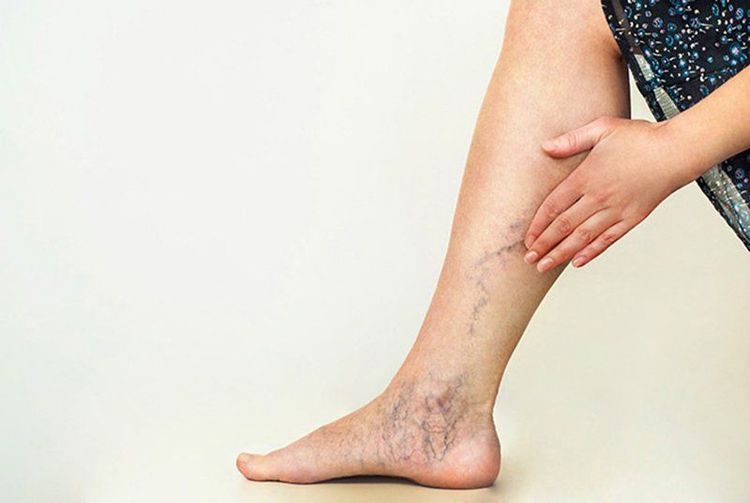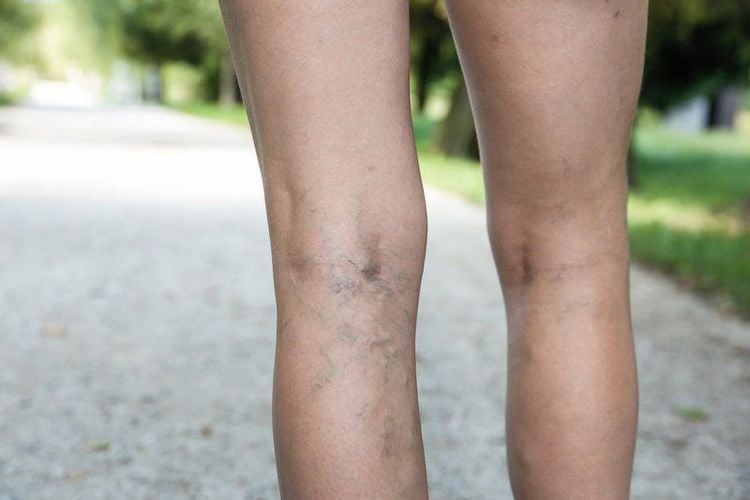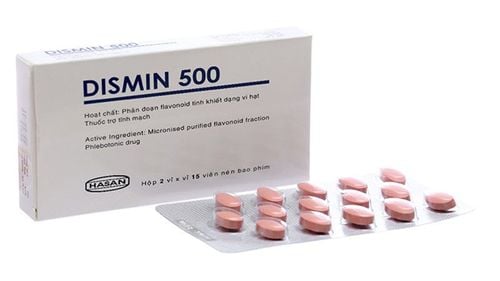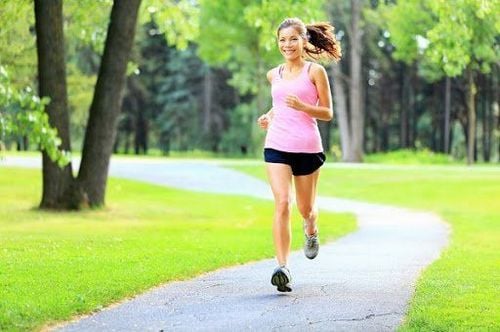This is an automatically translated article.
The article was professionally consulted with Specialist Doctor I Phan Dinh Thuy Tien - General Internal Medicine - Department of Medical Examination & Internal Medicine - Vinmec Nha Trang International General Hospital.Walking is a very healthy habit. However, many people with varicose veins of the lower extremities stop doing this because they are advised that walking is not good for people with varicose veins. So are these tips really true? Should you walk when you have varicose veins?
1. What causes varicose veins in the lower extremities?
Varicose veins of the lower extremities are a very common disease. According to one statistic, up to 35% of adults and 50% of retirees suffer from this condition, the cause of varicose veins is due to:The venous system is composed of a network consisting of: many tubular structures. The small distal veins carry blood to the larger veins and then back to the heart. The leg venous system consists of superficial/deep/penetrating veins. In normal leg veins, there will be valves. They are composed of 2 sac-like leaflets, with the concave side facing upwards. Each leaflet has a free part in the lumen, a part attached to the venous wall. When you stand up straight, the blood in your veins will have to overcome gravity to flow back to your heart. The muscles then have to squeeze the deep veins in the legs and feet, in sync with the opening and closing of the venous valves. When the muscles in the legs contract, the valves in the veins open, and when the muscles relax, the valves close. This keeps blood from flowing back down. The entire process of bringing blood back to the heart above is called venous pumping, with such a method of operation, the valves create a flow system in one direction from bottom to top and from shallow to deep. Varicose veins are caused by damage to the valves in the veins. At that time, blood will flow back down through the opening of the venous valve, causing stagnation and increased pressure in the veins, causing the superficial veins to dilate and become inflamed. This is also the source of the symptoms of pain and discomfort, leg swelling of varicose veins. See now: Diagnosis and treatment of chronic lower extremity varicose veins

Bệnh suy giãn tĩnh mạch chi dưới xuất hiện khi các van trong lòng tĩnh mạch hư hại
2. Should you walk if you have varicose veins?
One of the best exercises for people with varicose veins is walking. Because when you walk, the volume and pressure in the veins change. In it, when you are in a stationary position, with your feet in contact with the ground, there will be no venous flow.However, when the heel is raised, blood from the venous plexus of the lower heel and the sole of the foot pushes up into the deep veins of the lower leg. At that time, the activity of contraction of the leg muscles will push the blood flow to the veins of the thigh area and the blood will flow like that to the higher veins and continue to the heart.
When walking, it will help the venous pump work more efficiently. Experts have measured that the force of muscle pressure on the deep veins is higher when the legs are actively moving than when standing still. That has helped blood push strongly to the heart and reduce stasis, and at the same time, help reduce pressure in the superficial venous system.
For people with varicose veins of the legs, regular walking will improve the venous pumps, helping to push blood back to the heart better. In addition, it also reduces venous pressure due to stagnation. Instructions on how to walk properly for people with varicose veins of the lower extremities:
For patients who do not have the habit of walking, they should start walking with a short time and distance. Then gradually increase the distance and time. For people with leg ulcers due to venous insufficiency, ankle mobility will be limited. Therefore, the patient should receive physical therapy for the ankle and pain reliever before walking.

Mắc bệnh suy giãn tĩnh mạch có nên đi bộ không là thắc mắc của nhiều người bệnh
A recently updated medical study, said: "For people with chronic varicose veins, if you walk for less than 10 minutes / day, there is a higher risk of foot ulcers than people who are physically active. positive. In addition, the vascular surgery associations around the world also recommend that patients with varicose veins should walk every day.
You can walk 30-45 minutes / time, can repeat many times a day.
Hope the above useful information has helped people find the answer to the question "Should you walk when you have varicose veins?" Wish everyone have a healthy feet.
Follow Vinmec International General Hospital website to get more health, nutrition and beauty information to protect the health of yourself and your loved ones in your family.
Please dial HOTLINE for more information or register for an appointment HERE. Download MyVinmec app to make appointments faster and to manage your bookings easily.













